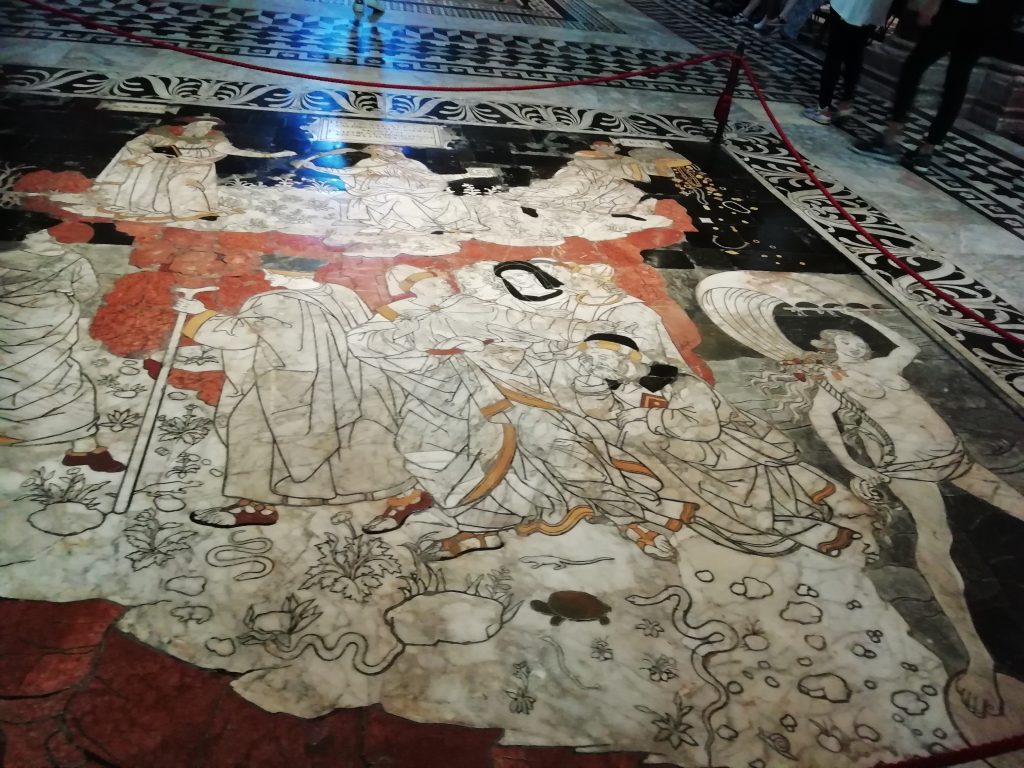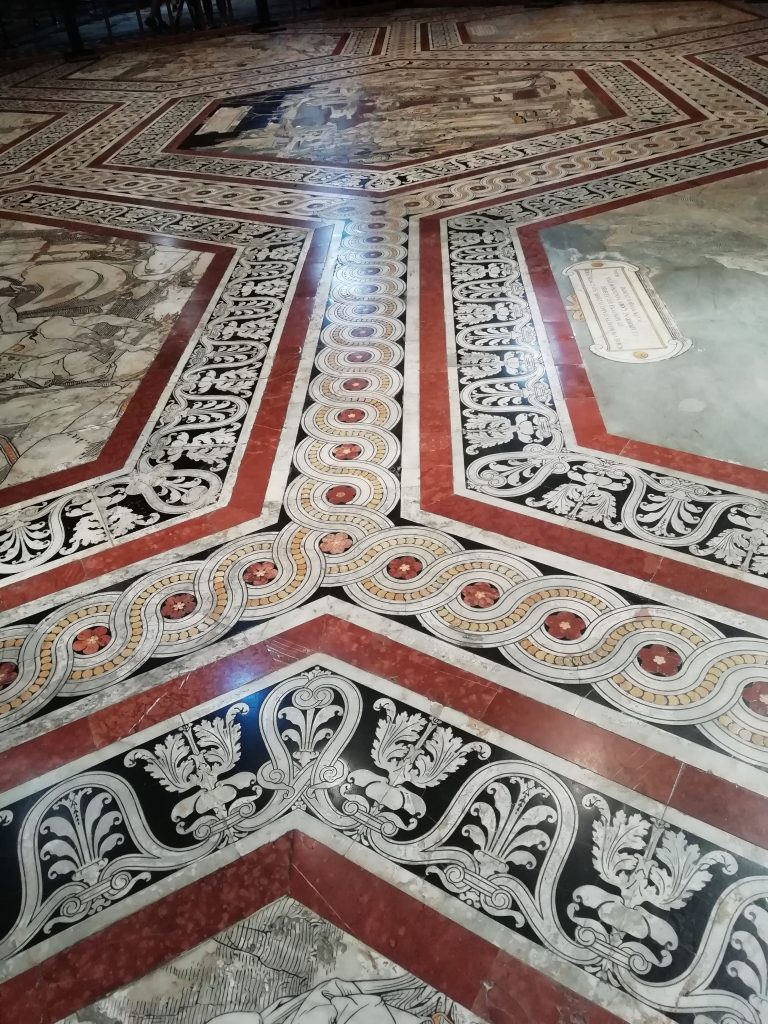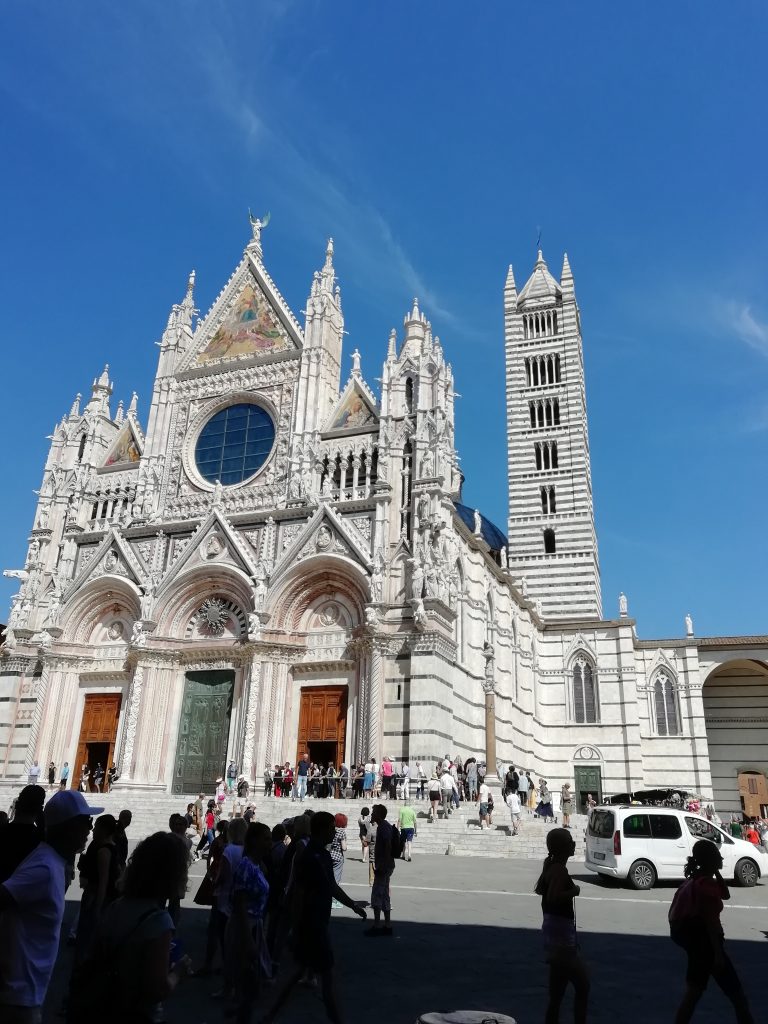


The Siena Cathedral, located in the Tuscan city of Siena, Italy, is widely regarded as one of the most magnificent Gothic cathedrals in the world. The cathedral’s interior is decorated with stunning works of art, including intricate marble sculptures, beautiful frescoes, and an ornate marble mosaic floor. The floor of the Siena Cathedral is particularly noteworthy for its intricate designs, historical significance, and stunning beauty.
The floor of the Siena Cathedral was designed and constructed over the course of several centuries, with work beginning in the 14th century and continuing through the 19th century. The floor is made up of over 50 panels of marble inlaid with intricate designs, including geometric patterns, mythological scenes, and biblical stories. The designs are executed in a variety of techniques, including intarsia (inlaid wood), graffito (scratched or etched lines), and marble intarsia (inlaid marble).
One of the most striking features of the floor is the “Moses and the Burning Bush” panel, which is located near the altar. This panel was created in the mid-16th century by the famous artist Domenico Beccafumi and depicts the biblical story of Moses and the burning bush. The panel is executed in graffito technique, which involves scratching or etching lines into the marble surface. The result is a stunning three-dimensional effect that brings the scene to life.
Another notable panel is the “Labours of the Months” panel, which is located near the entrance of the cathedral. This panel depicts the twelve months of the year and the agricultural activities associated with each month. The panel is executed in intarsia technique, which involves inlaying small pieces of marble in different colors to create a design. The result is a stunningly intricate and detailed depiction of the changing seasons.
In addition to its artistic beauty, the floor of the Siena Cathedral has significant historical and cultural importance. The designs on the floor reflect the cultural and religious beliefs of the people who created them and provide a window into the history and culture of Siena. The floor is also significant for its role in the religious life of the cathedral, serving as a reminder of the biblical stories and teachings that are central to the Christian faith.
In conclusion, the floor of the Siena Cathedral is a remarkable work of art that reflects the artistic, cultural, and religious traditions of Siena. The intricate designs, executed in a variety of techniques, are a testament to the skill and creativity of the artists who created them. The floor is a testament to the enduring legacy of the Siena Cathedral and a reminder of the importance of art and culture in our lives.
